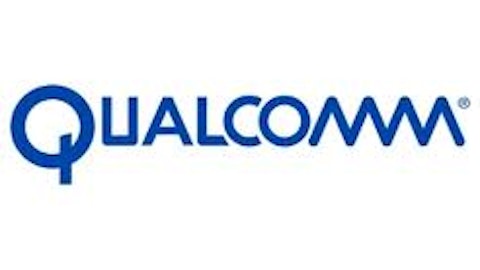Given the last 2.5 years, it seems an understatement to say Dolby Laboratories, Inc. (NYSE:DLB) shareholders have had it tough.
Following the stock’s relentless climb through the end of 2011, shares of the audio specialist have underperformed the S&P 500 by almost 75% as demand for its products waned in its core PC, DVD, and Blu-ray device markets:

DLB Total Return Price data by YCharts.
Even so, thanks to Dolby Laboratories, Inc. (NYSE:DLB)’s perennially high profit margin and return on capital, the company has managed to stay firmly in the black as it seeks ways to diversify its revenue streams.
Luckily for Dolby investors, this quarter was no different.
The numbers
When all was said and done in the first three months of 2013, Dolby Laboratories, Inc. (NYSE:DLB) beat analysts’ estimates with both revenue of $249.3 million and GAAP net diluted earnings of $0.60 per share. What’s more, each of those numbers came in at the high end of Dolby’s previous guidance, which called for revenue in the range of $240 million to $250 million and GAAP diluted earnings per share of $0.53 to $0.60.
On guidance, Dolby Laboratories, Inc. (NYSE:DLB) management told investors to expect next quarter’s revenue to come in between $205 million to $215 million, with diluted GAAP earnings per share in the range of $0.26 and $0.32.
Finally, the company also lowered the top end of its full-year 2013 revenue guidance and now expects sales to come in from $910 million to $940 million.
Most important for Dolby, however, is how that future revenue will be broken up.
The bad
First, PC revenue comprised 26% of Dolby Laboratories, Inc. (NYSE:DLB)’s total licensing last quarter, down 2% sequentially and 4% year over year. Of course, considering the precipitous fall of the PC market over the past several years, this shouldn’t exactly come as a surprise to anyone.
Next, and perhaps equally unsurprising, the consumer electronics market made up 15% of Dolby’s total licensing, down about 5% sequentially and 25% from the year-ago period.
Together, these two segments represent the bulk of investors’ worries about Dolby as consumers increasingly gravitate to streaming video sources through tablets and smartphones, where many don’t necessarily expect the same levels of high-quality audio from which Dolby’s original fortunes were made.
The good
On a more encouraging note, broadcast represented about 38% of Dolby Laboratories, Inc. (NYSE:DLB)’s total revenue, up 27% sequentially and 8% over last year’s second quarter. To be sure, the broadcast market, which comprised just over 33% of Dolby’s sales last quarter, remains one of the company’s most significant opportunities for expansion. While Dolby has permeated the U.S. and European markets for broadcast sound, it remains perfectly positioned to benefit when its audio standards are adopted as less-developed countries inevitably convert to digital television.
Mobile device revenue, for its part, made up 10% of licensing in the quarter, up about 10% sequentially and 32% over last year. This of course, remains a key growth area for Dolby Laboratories, Inc. (NYSE:DLB), though investors remain unconvinced mobile will be able to make up for the shortfalls in the PC and consumer electronics markets — especially when we consider mobile actually made up 11% of Dolby’s revenue last quarter.
Even still, the gains in broadcast are more than satisfactory, and the fact remains Dolby’s mobile streams are continuing to grow at an impressive clip thanks to a number of catalysts. For instance, QUALCOMM, Inc. (NASDAQ:QCOM) made the decision last year to include support for the Dolby Digital Plus format directly in its latest Snapdragon chips, and Amazon.com, Inc. (NASDAQ:AMZN) includes Dolby as a differentiator for its latest Kindle Fire devices. Furthermore, Dolby has continued to see increased integration into a variety of smartphones, including its recently announced deal with up-and-coming Chinese phone maker ZTE.
